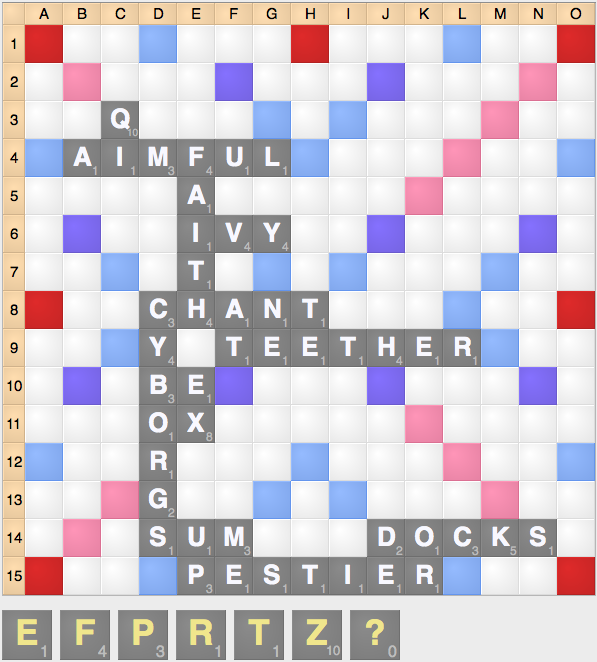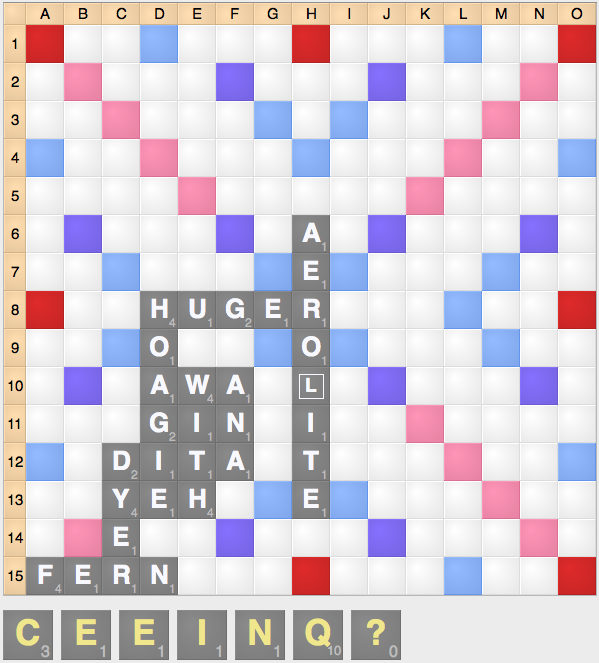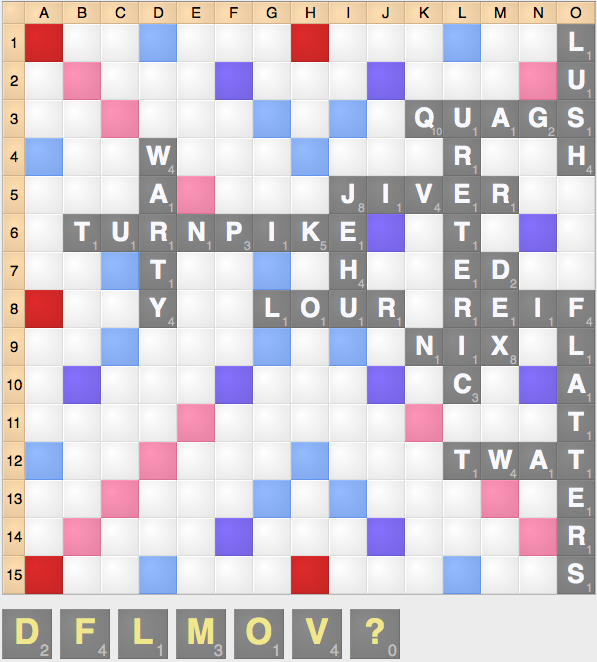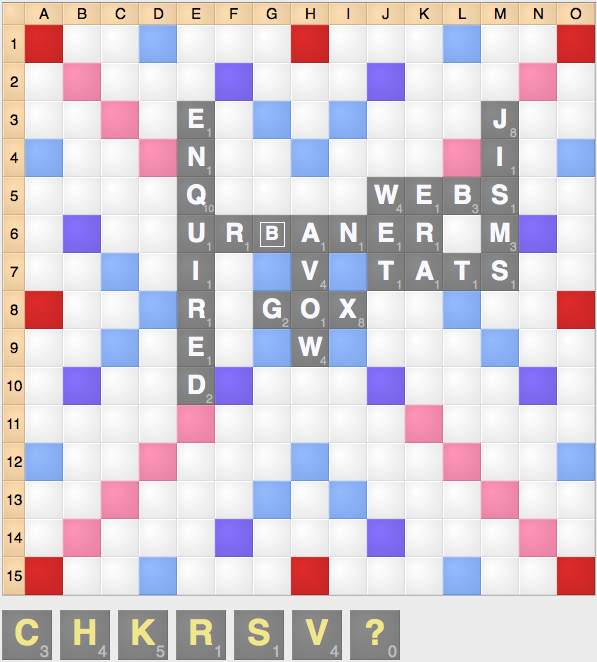Many players view the blank as having a sole purpose: a tool to help you play a bingo. Since the blank can represent any tile, its ability to bingo is unparalleled: whenever you have a blank, it is nearly inevitable that you will be able to bingo within a couple turns.
However, blanks are strong tiles that can be used for other purposes as well. The blank can also be used as a scoring tile, helping you increase the potential of you to score points and gain flexibility on your rack. The blank can help you get bingo-worthy scores with good scoring tiles, as well as make good scores with otherwise terrible racks.
One of the secondary purposes of the blank is to help to supplement scoring tiles, such as the J, Q, X, or Z. The blank often dramatically increases the effectiveness of these tiles, allowing you to form either parallel plays or premium square combinations that can lead to very high scoring plays.
 |  |
In the left diagram, using the blank to supplement the Z allows you to play TRaPEZE k5 for 68 points. In the right diagram, the blank can be used to use the normally clunky Q and allow you to play EQuINE 13h (48).
Another reason to use the blank is to score with otherwise horrible tiles. This often occurs either because you lack vowels or because you have a lot of clunky tiles that are difficult to use.
 |  |
In the left diagram, you have a very clunky rack with only one vowel, but can clear the rack and score some points by playing FLaVOR 14j (38). In the right diagram, you have no good scoring options (other than HECK, which leaves a C hook) and an excess of consonants. You’re best off using the blank to clear your clunky rack by playing KVEtCH 3c (40).
Fill in the Blank #3 discusses how to find 8 letter bingos using the blank.
